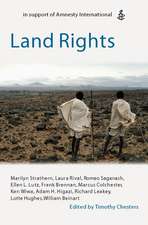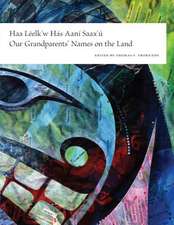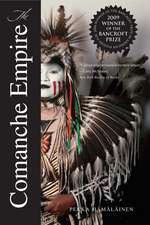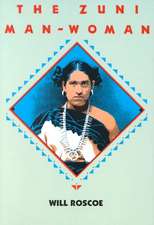A Walk to the River in Amazonia
Autor Carla D. Stangen Limba Engleză Paperback – 31 oct 2011
...an extraordinary ethnographic work... outstanding - in the audacious naturalism of its form, the compelling way in which Stang reads Mehinaku reality between the lines, capturing the flow and fluctuations of consciousness as well as the materiality and physicality of their existence. Michael Jackson, Harvard University
This is an important study both as ethnography and as an interpretive achievement. To my mind there is no better study from Amazonia that elucidates specifically the archetypal scheme of reality which is an extraordinary notion commonly encountered in Amazonian life-worlds... The book will be a contribution to South American anthropology and, even more significantly, to the growing field of comparative cosmologies and comparative systems of knowledge. Jadran Mimica, University of Sydney
This [book] is... refreshing because the normal picture of Amazonian symbolism/cosmology is typically written by men and based on observations of male ritual... Carla... show[s] how ordinary people (in this case, women) think about and experience an enchanted world rather than what the ritual experts (and anthropologists) claim... There is an abundance of clever, imaginative anthropological interpretations of what Amazonians say and do... What very few have ever really asked is how all this... is actually experienced and understood by the people involved. Carla does that and does it very well. Stephen Hugh-Jones, University of Cambridge
Our lives are mostly composed of ordinary reality - the flow of moment-to-moment existence - and yet it has been largely overlooked as a subject in itself for anthropological study. In this work, the author achieves an understanding of this part of reality for the Mehinaku Indians, an Amazonian people, in two stages: first by observing various aspects of their experience and second by relating how these different facets come to play in a stream of ordinary consciousness, a walk to the river. In this way, abstract schemata such as 'cosmology,' 'sociality,' 'gender,' and the 'everyday' are understood as they are actually lived. This book contributes to the ethnography of the Amazon, specifically the Upper Xingu, with an approach that crosses disciplinary boundaries between anthropology, philosophy, and psychology. In doing so it attempts to comprehend what Malinowski called the 'imponderabilia of actual life.'
Carla Stang received her undergraduate degree at the University of Sydney and was awarded the Frank Bell Memorial Prize for Anthropology for her studies there. In 2005, she earned her Ph.D. in Social Anthropology at the University of Cambridge. Since then she held the position of Visiting Scholar at Columbia University, and is now an Associate Researcher at the University of Sydney. Thus far most of her ethnographic fieldwork has been in the Upper Xingu region of the Brazilian Amazon.
| Toate formatele și edițiile | Preț | Express |
|---|---|---|
| Paperback (1) | 258.88 lei 6-8 săpt. | |
| BERGHAHN BOOKS INC – 31 oct 2011 | 258.88 lei 6-8 săpt. | |
| Hardback (1) | 748.72 lei 6-8 săpt. | |
| BERGHAHN BOOKS INC – 30 iun 2009 | 748.72 lei 6-8 săpt. |
Preț: 258.88 lei
Nou
Puncte Express: 388
Preț estimativ în valută:
49.55€ • 53.84$ • 41.65£
49.55€ • 53.84$ • 41.65£
Carte tipărită la comandă
Livrare economică 21 aprilie-05 mai
Preluare comenzi: 021 569.72.76
Specificații
ISBN-13: 9780857451552
ISBN-10: 0857451553
Pagini: 248
Dimensiuni: 152 x 229 x 13 mm
Greutate: 0.33 kg
Editura: BERGHAHN BOOKS INC
ISBN-10: 0857451553
Pagini: 248
Dimensiuni: 152 x 229 x 13 mm
Greutate: 0.33 kg
Editura: BERGHAHN BOOKS INC
Notă biografică
Carla Stang received her undergraduate degree at the University of Sydney and was awarded the Frank Bell Memorial Prize for Anthropology for her studies there. In 2005, she earned her doctorate in Social Anthropology at the University of Cambridge. SInce then she has been a Visiting Scholar at Columbia University, and is now an associate researcher at the University of Sydney. For the most part she carries out her ethnographic fieldwork in the Upper Xingu region of the Brazilian Amazon.
Cuprins
List of Figures List of Plates Preface Acknowledgements Pronouncing Mehinaku Words Glossary Introduction I. The Question II. Writing about Lived Experience III. Writing about Ordinary Reality: from My Walk, through Her World, to Her Walk IV. Some Methodological Issues to Do with My Approach V. Contributions and Limitations of This Book VI. Some Background Chapter 1. My Walk Chapter 2. Configurations in Mehinaku Experience I. Substance II. Who Are the Apapanye?: the Substantiality of Spirits III. The Deception of Substance: All about 'Skins' IV. Eternal Archetypes and the Generation of Skins V. The Lake of Butterflies: an Amazonian Metaphysics VI. Mirroring and Parallel Configurations of Different Soul-worlds Chapter 3. Dynamic Aspects in Mehinaku Experience I. The Constant Movement of Mehinaku Existence II. 'Star Birds': Movement between Different Dimensions of Reality III. The Impetus of Movement: the Dynamic of Desire IV. The Boundaries for the Flow of Desire: Concentric Circles and Paths V. The Ever Present Threat of the Collapse of Form: Dangerous Desire Let Loose VI. Holding up the Form of the Worlds: Maintaining Good Relationships (the 'Uwekehe Complex') and Integrity of Person (the Issue of Yerekyuki) VII. The Dynamic of Daring: to Create, Maintain and Improve Form, One Must Risk Form VIII. The Aweshepai Ideal: a Life of Anxious Joy, in Tension between Integrity and Risk Chapter 4. Experience of Mehinaku Experience I. The Concept of a Concept: Mehinaku 'Thingness' and the Blending of Entities II. How Things Are Associated: at the Most Basic Level; in a 'Story Logic'; in a Certain Understanding of Ritual III. 'Awitsiri': the Principle of 'Care/Grace'; Living with the Right Consciousness in a World Made Manifest by Consciousness Chapter 5. Experience of the Mehinaku Social World I. In the House of the Jaguar: Shamans and Sorcerers in Mehinaku Experience II. Paths through the Akai Groves: Some Ideas about Mehinaku Experiences of Gender III. The Owl and the Toucan: General Tendencies of Mehinaku Sociality Chapter 6. Some Conclusions Chapter 7. Her Walk Cross References from the Description to Chapters 2 - 5 Bibliography Index
Recenzii
"The book's integration of cosmology with everyday Mehinaku practice, along with its concise and evocative writing style, makes for an important contribution to Amazonian anthropology - Stang's book is one of the best examples of how Amazonian research today is beginning to bridge the previous gap between studies of seemingly abstract cosmology and fine-grained ethnography of everyday practice." * JRAI " - an extraordinary ethnographic work - outstanding - in the audacious naturalism of its form, the compelling way in which Stang reads Mehinaku reality between the lines, capturing the flow and fluctuations of consciousness as well as the materiality and physicality of their existence." * Michael Jackson, Harvard University "This is an important study both as ethnography and as an interpretive achievement. To my mind there is no better study from Amazonia that elucidates specifically the archetypal scheme of reality which is an extraordinary notion commonly encountered in Amazonian life-worlds... The book will be a contribution to South American anthropology and, even more significantly, to the growing field of comparative cosmologies and comparative systems of knowledge." * Jadran Mimica, University of Sydney "This [book] is... refreshing because the normal picture of Amazonian symbolism/cosmology is typically written by men and based on observations of male ritual... Carla... show[s] how ordinary people (in this case, women) think about and experience an enchanted world rather than what the ritual experts (and anthropologists) claim... There is an abundance of clever, imaginative anthropological interpretations of what Amazonians say and do... What very few have ever really asked is how all this... is actually experienced and understood by the people involved. Carla does that and does it very well." * Stephen Hugh-Jones, University of Cambridge










